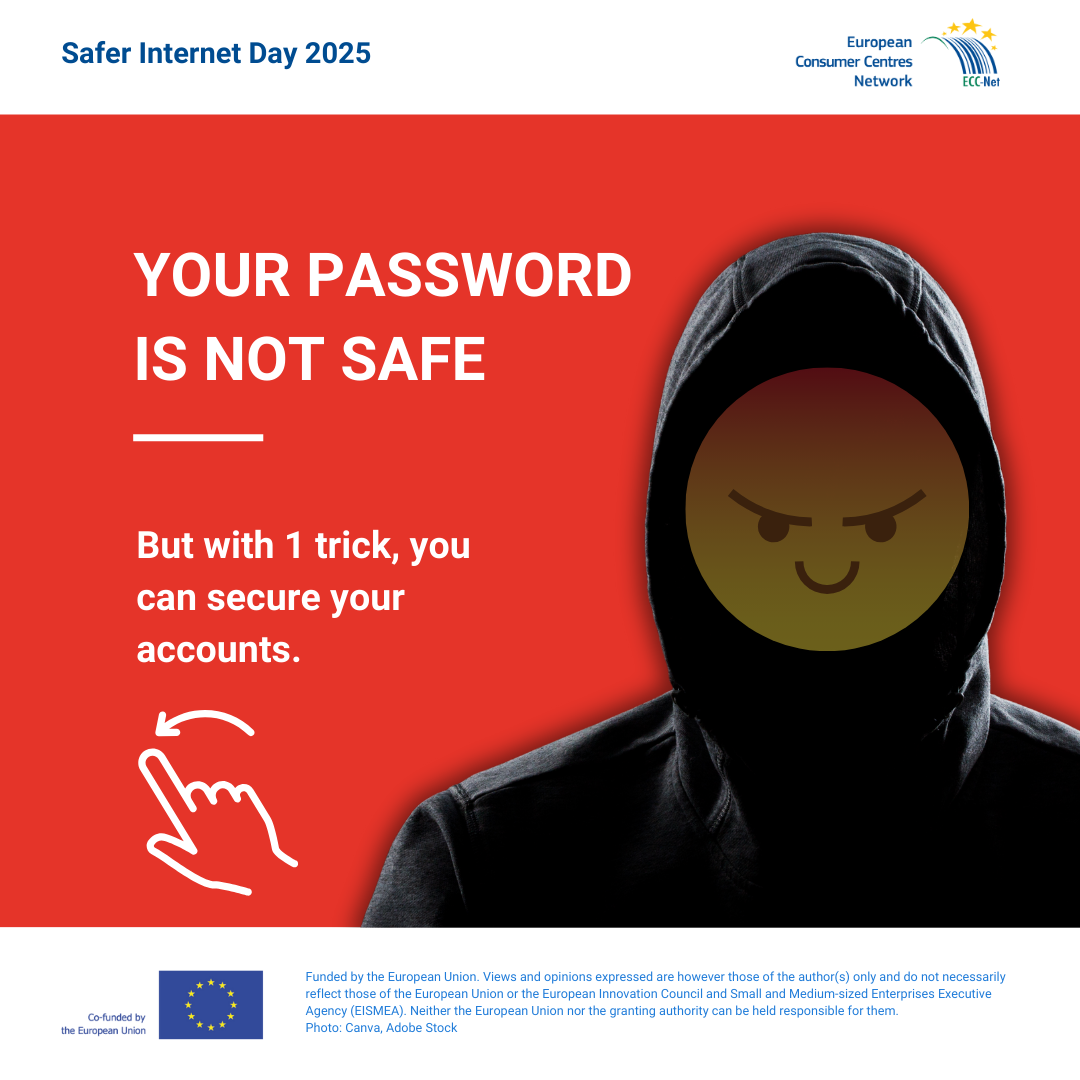
On the occasion of Safer Internet Day, which is celebrated every year on the second Tuesday of February, the European Consumer Centre in ECC-Spain (ECC-Spain) recommends online users to strengthen the security of their accounts and protect themselves against cybercriminals. To do so, simply activate two-step verification, also known as two-factor authentication (2FA) or two-factor authentication. In this way, an additional security measure is added to the password that is usually used to protect online users' accounts from unauthorised access. According to the National Institute of Cybersecurity (Incibe), the use of two-factor authentication makes it much more difficult for hackers to gain access to an account, even if they obtain or guess the password.
For this reason, ECC-Spain recommends that consumers activate two-step verification on all their online accounts that allow it, such as e-mails, social networks, instant messaging, online banking services and other services that store sensitive data, such as cloud storage services, marketplaces or online shops. Note that each service may have its own way of setting up two-step verification, so it is important to follow the specific instructions for each platform or service.
General instructions for activating 2FA are as follows:
Log in.
Access the online account using your username and password.
Look for the security or account settings option.
Depending on the service, the two-step verification option may be located in different places within the account settings. Look for a section related to security or safety.
Select the two-step verification option.
Once you find the two-step verification option, select enable or activate it. You may be asked to provide more information, such as a mobile phone number to receive verification codes.
Set up the second factor of authentication.
Choose the type of second factor authentication. This may include receiving verification codes by text message (SMS) or email, generating codes through an authentication application, or using a physical key. Follow the instructions provided by the service to set it up.
Perform two-step verification.
Once set up, the service will ask you to complete the process the next time you try to log in. This usually involves entering a unique verification code that is either sent to your device or generated by your authentication app, depending on the method you have chosen.
Save your backup codes.
Some services provide additional backup codes for you to use in case you cannot access your primary second authentication factor, such as when you lose your device or do not have access to the authentication application. Be sure to keep these backup codes in a safe place.
About Safer Internet Day
Safer Internet Day (SID) #SID2025 is an international event organised by the Insafe/INHOPE networks of Internet Safety Centres in Europe, with the support of the European Commission. This initiative is performed every year, on the second Tuesday of February, with the aim of creating not only a safer Internet, but also a better Internet, through the responsible, respectful, critical, creative and positive use of technology, especially among children and young people. It is an event where millions of people around the world come together to raise awareness of security issues and participate in events and activities.